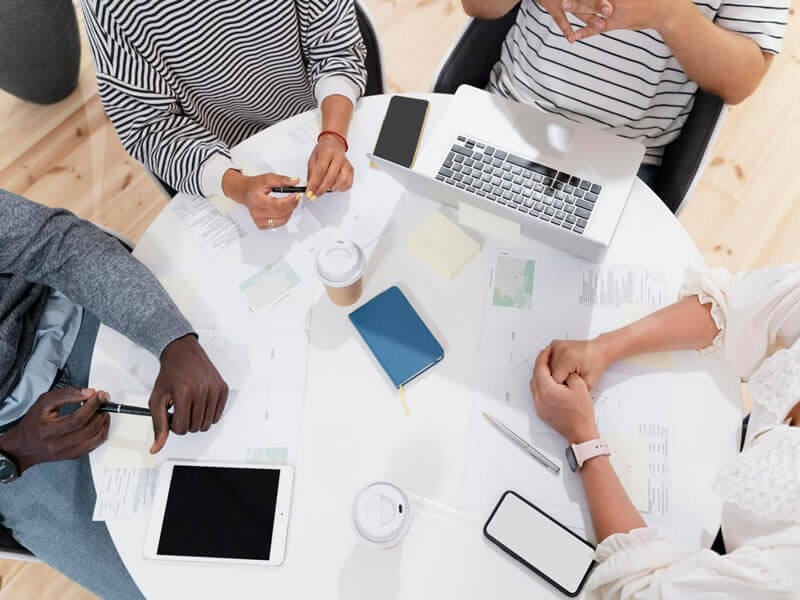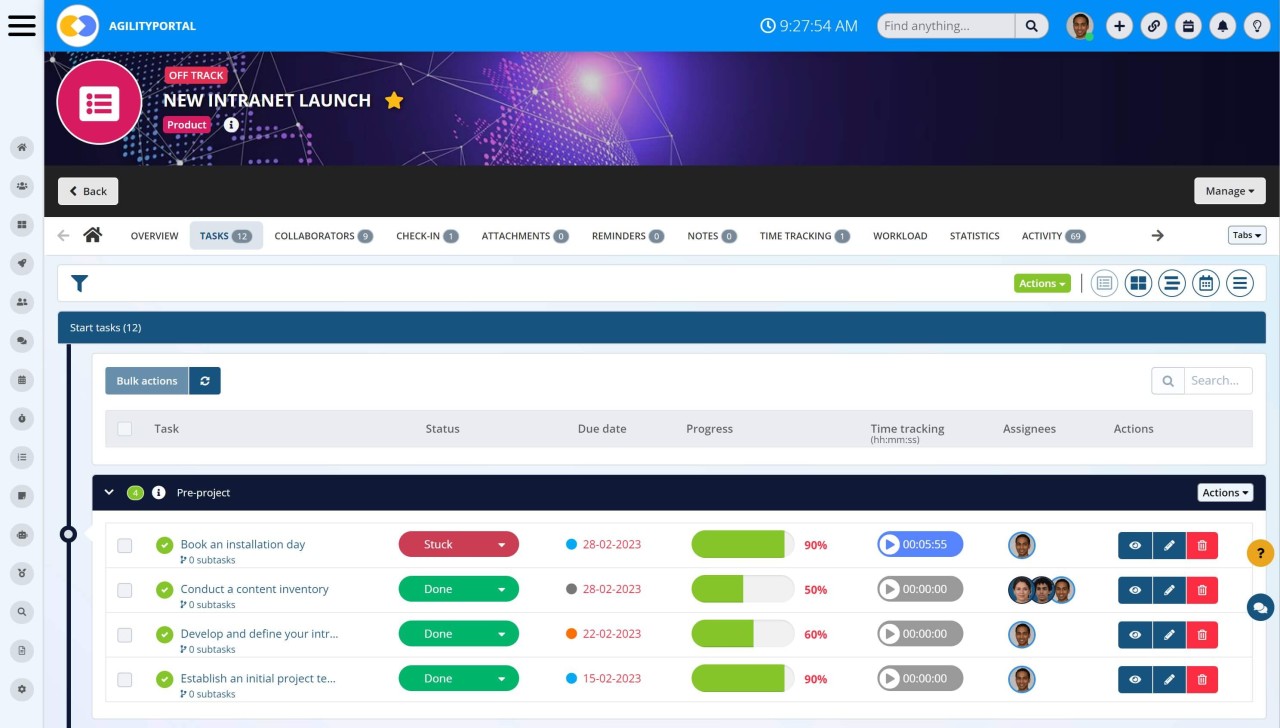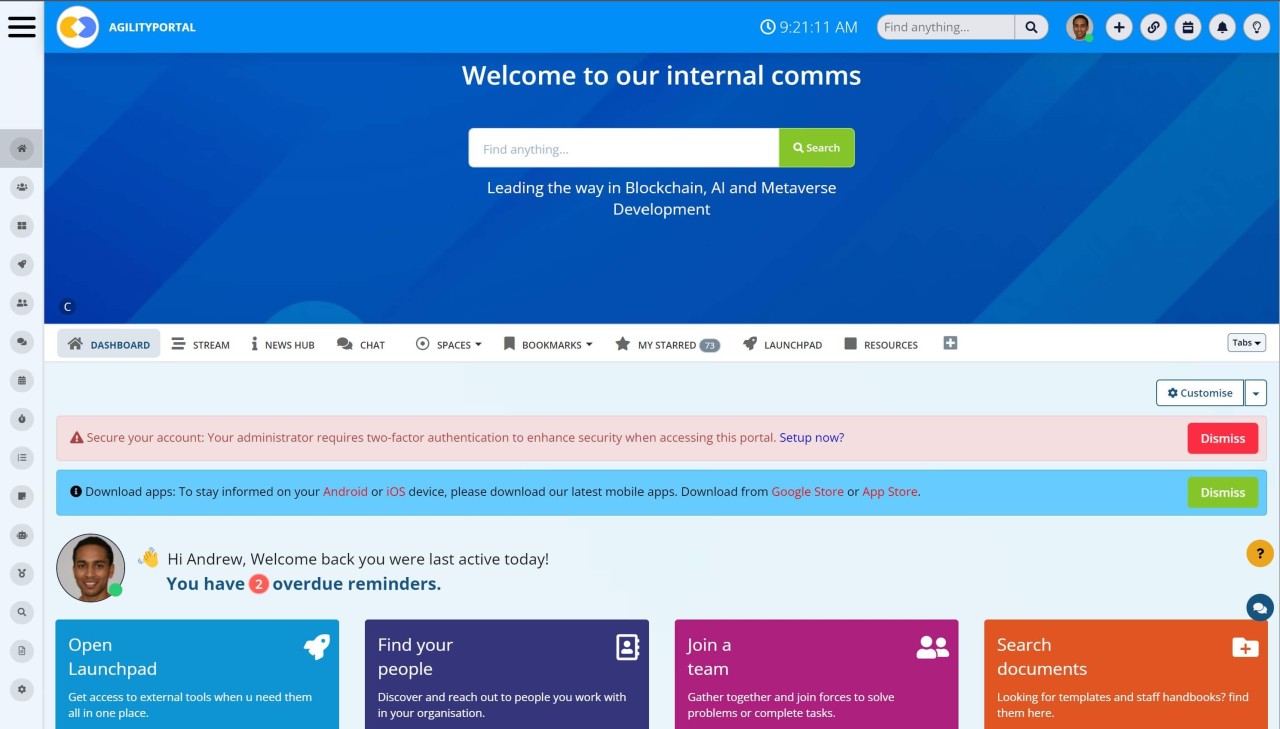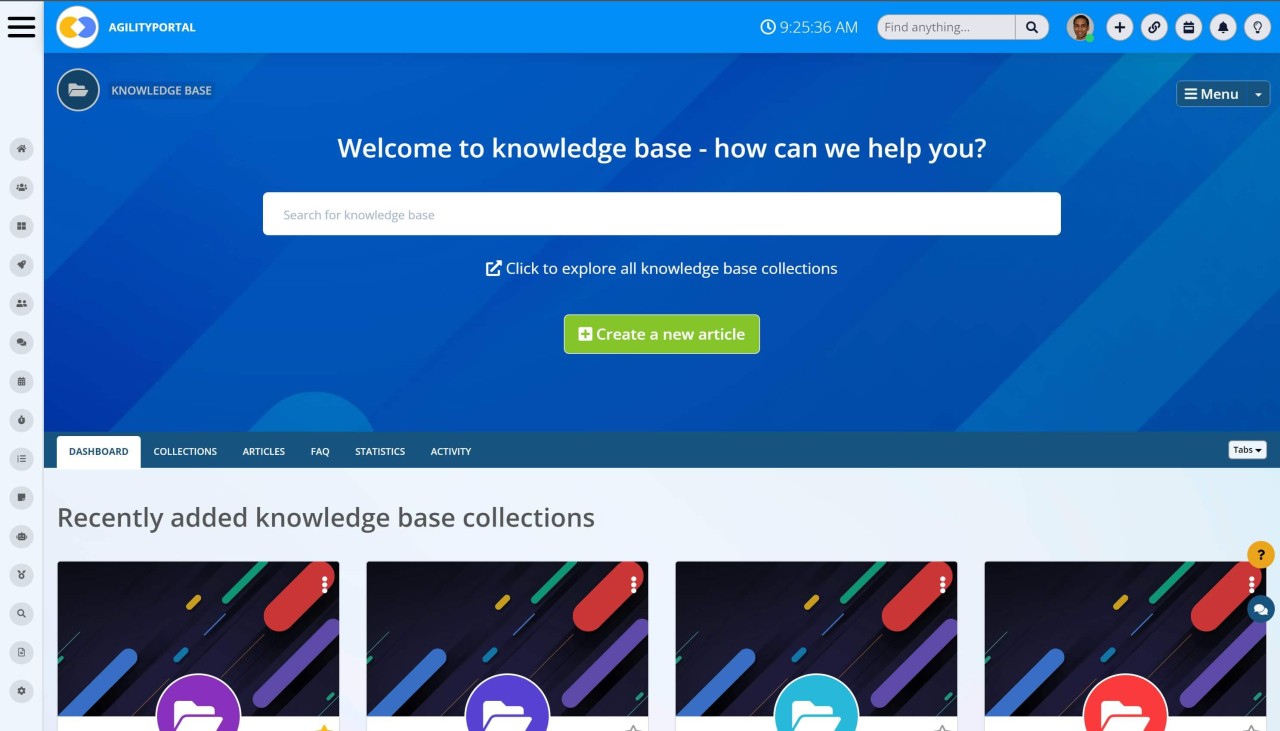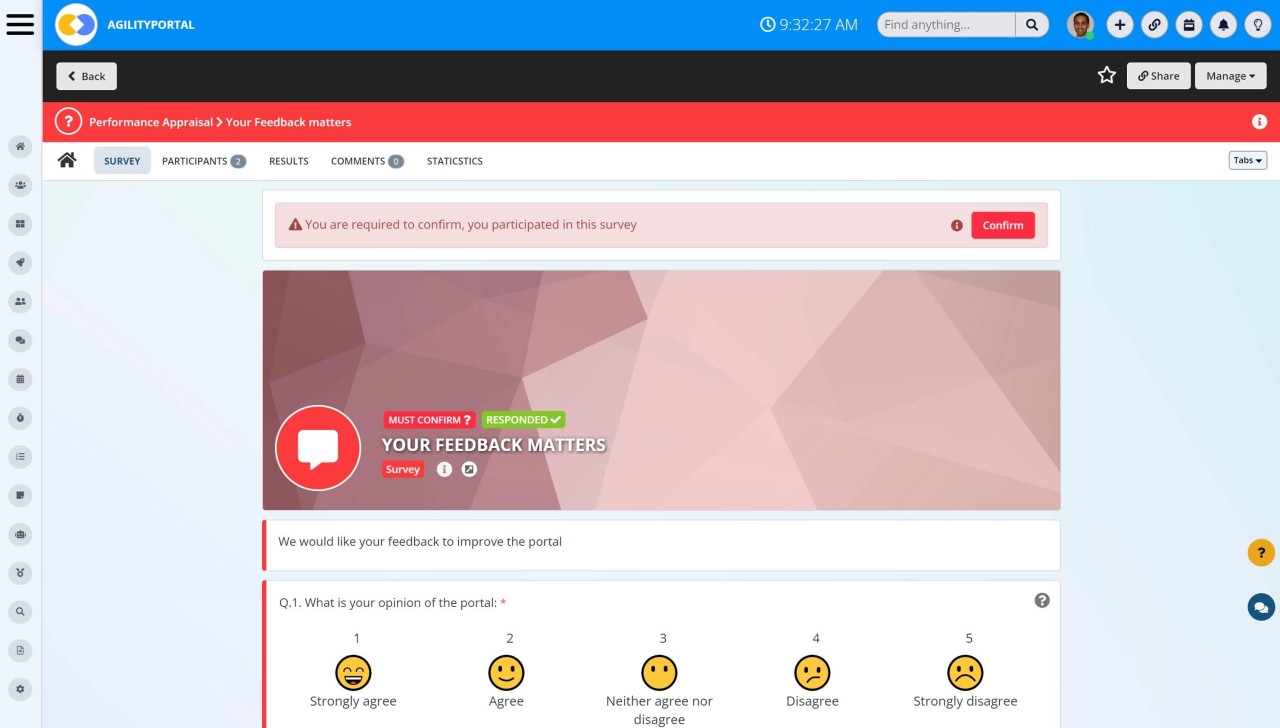Insight Blog
Agility’s perspectives on transforming the employee's experience throughout remote transformation using connected enterprise tools.
22 minutes reading time
(4447 words)
What are the digital applications that focus on workplace communications?
One key significance of workplace communications in the digital era is the ability to connect geographically dispersed teams and remote workers.
In the digital era, workplace communication has become increasingly significant due to its profound impact on organizational efficiency, collaboration, and overall success.
With the advent of technology and the widespread use of digital tools, communication has evolved from traditional face-to-face interactions to a diverse range of digital platforms and channels.
Ever asked yourself what are the digital applications that focus on workplace communications?
One key significance of workplace communications in the digital era is the ability to connect geographically dispersed teams and remote workers.
Digital tools such as email, instant messaging, video conferencing, and project management software enable seamless communication and collaboration regardless of physical location.
This allows organizations to tap into global talent pools, enhance teamwork, and improve productivity.
Workplace communication in the digital era facilitates real-time decision-making and problem-solving.
Digital platforms enable quick and efficient exchange of information, ideas, and feedback among team members and departments.
This enhances the speed of decision-making processes, leading to agile and responsive organizations that can adapt to rapidly changing market conditions.
In this content we answer the question what are the digital applications that focus on workplace communications?
Let's explore the topic of workplace communications and the challenges associated with it.
Understanding Workplace Communications
Workplace communication means the exchange of information and ideas, both verbally and non-verbally, among individuals or groups within an organization.
It encompasses various forms of communication, such as emails, videoconferences, text messages, notes, and calls.
Effective communication is vital for accomplishing tasks and establishing trust, ultimately enhancing productivity.
Within a diverse workforce with different cultural backgrounds and expectations, effective communication is essential for promoting cooperation among employees and preventing delays or detrimental outcomes.
Conversely, ineffective communication creates gaps that lead to confusion, time wastage, and reduced productivity.
Effective communication is crucial for productivity and maintaining strong relationships within an organization, especially in the context of remote work prompted by the Covid-19 outbreak.
Employers who prioritize clear communication will quickly build trust among employees, resulting in increased productivity, output, and overall morale.
On the other hand, employees who possess effective communication skills when interacting with colleagues, managers, and customers become valuable assets to an organization and gain a competitive edge when seeking job opportunities.
Conversely, poor workplace communication will lead to demotivated staff who may begin to doubt their own abilities and lose confidence in the organization
Traditional Communication Challenges
In the modern workplace, there is a vision of a digitally transformed utopia where engaged employees communicate and collaborate seamlessly.
While this may not be the reality for every organization, it is true that effective communication plays a vital role in fostering employee satisfaction, driving innovation, and potentially increasing profitability.
Surprisingly, a staggering 60% of companies lack a long-term strategy for internal communications. However, developing and implementing a well-designed plan can be a straightforward process.
By taking into account a few key considerations and gaining a comprehensive understanding of the challenges in internal communications, organizations can create an ideal digital workplace and enjoy the numerous benefits it brings.
#1.The People
Despite the notion that the modern workplace is highly connected, a study by Trade Press Services reveals that a significant 74% of employees believe they are not adequately informed about company information and news.
Unchecked egos within the workplace can hinder teamwork, impede employees from feeling heard or expressing their opinions, and contribute to a destructive cycle that creates additional communication barriers.
Astonishingly, Harvard Business Review reports that two-thirds of managers feel uncomfortable when communicating with their employees.
#2.The content
It is crucial to meticulously plan your internal communication (IC) strategy, taking into account every channel you use. Before sending that management email or conducting a company-wide virtual conference, ensure that your message is clear, concise, and tailored to your team's needs without being condescending.
How can you achieve this?
By avoiding the following pitfalls in your internal communications!
Unfortunately, poorly written materials are prevalent in today's workplaces. Incorrect syntax, grammar mistakes, and out-of-context content are all too common in interoffice business publications, leading to confusion.
According to HR Technologist, a staggering 57% of employees report not receiving clear directions. This is definitely concerning!
In a world already filled with misinformation, your employees shouldn't have to conduct extensive research or fact-check your internal communications.
IBM highlights that a significant 72% of employees lack a comprehensive understanding of their company's strategy. This calls for attention and improvement in internal communication practices.
#3.The channels
Experiencing a failure to deliver after investing valuable time in crafting the perfect message can be incredibly frustrating. In today's modern workplace, we heavily rely on technology to transmit our internal communications.
Therefore, lacking the appropriate tools to effectively deliver your message becomes a significant obstacle.
To ensure consistency in your communication approach, it is essential to determine which channels are best suited for different aspects of your internal communication strategy. Making these decisions in advance will yield numerous benefits.
According to Recruiter, 33% of employees identified a lack of open and honest communication as having the most negative impact on employee morale.
The good news is that by investing in the right channels, you not only encourage your workforce to explore and embrace your vision, but you also contribute to creating an environment where individuals feel actively involved in its execution.
That's definitely a positive outcome!
Although it's true that channels like email and intranets lack face-to-face interaction, many modern workplaces have been built around these very technologies.
#4.Feedback
Internal communications often revolve around the sender's perspective, making it essential for senior employees and management to actively promote two-way communication.
Failure to encourage junior-level employees to share ideas or voice concerns can lead to significant breakdowns in communication within an organization.
By providing all employees with opportunities and channels to provide feedback, you can enjoy the advantages of improved productivity, enhanced cohesion, collaboration, and the overall progress of your company as a unified entity.
The Rise of Digital Applications in Workplace Communications
Despite the notion that the modern workplace is highly connected, a study by Trade Press Services reveals that a significant 74% of employees believe they are not adequately informed about company information and news.
Unchecked egos within the workplace can hinder teamwork, impede employees from feeling heard or expressing their opinions, and contribute to a destructive cycle that creates additional communication barriers.
Astonishingly, Harvard Business Review reports that two-thirds of managers feel uncomfortable when communicating with their employees.
In recent years, there has been a significant rise in the use of digital applications for workplace communications.
With advancements in technology and the increasing need for remote work solutions due to covid, companies are adopting various digital tools to enhance communication and collaboration among their employees.
This shift has revolutionized the way people interact and exchange information within the workplace, leading to increased efficiency and productivity.
One of the main factors contributing to the rise of digital applications in workplace communications is the widespread availability of smartphones and high-speed internet connections.
These tools have made it easier than ever for employees to stay connected regardless of their physical location.
Digital applications such as instant messaging platforms, video conferencing tools, and project management software enable real-time communication and collaboration, bridging the gap between team members working from different offices or even different parts of the world.
The concept of digital transformation has emerged as organizations recognize its potential to deliver substantial advantages, including enhanced efficiency, improved employee experience, and cost reduction.
Nonetheless, it is important to acknowledge that this transformative process can bring about notable shifts in employees' work dynamics, potentially influencing their levels of engagement.
So to ease the impact we have listed some digital workplace examples that have transformed the way we communicate at work in 2023.
#1.Instant Messaging Tools
In 2023, instant messaging tools are software applications or platforms that allow users to send and receive messages in real-time over the internet. These tools have become an essential part of communication in both personal and professional settings. Enhancing real-time communication and fostering collaboration in the workplace, a must have tool for remote working, here are the best digital workplace solutions on the market:
Here are some popular instant messaging tools in 2023:- AgilityPortal: Real-time chat messaging platform to connect remote employees
- Slack: The powerhouse of workplace messaging
- Microsoft Teams: Empowering seamless teamwork
- Google Chat: Simplifying communication within G Suite
The benefit of using instant messaging in the workplace:
- Instant messaging facilitates quick and real-time communication among employees.
- It allows for instant feedback and clarification, leading to increased efficiency.
- Team members can exchange information, ideas, and updates promptly.
Follow us and access great exclusive content everyday: Follow us on Google News
#2.Video Conferencing Platforms
Video conferencing has been a significant cost-saving solution for us. It has allowed employers to eliminate major expenses like office rent, utilities, office supplies, and food.
Additionally, it has made the process of hiring new employees easier by removing constraints such as the need for physical office space or a specific location. From a video conferencing standpoint, here are the best digital workplace platform for video calls.
Revolutionizing remote meetings and virtual collaborations:- Zoom: Uniting teams across distances
- Microsoft Teams: Enabling face-to-face interactions
- Google Meet: Bringing people together virtually
- Video conferencing enhances communication by allowing face-to-face interactions regardless of geographical distances.
- It enables real-time collaboration, fostering better teamwork and knowledge sharing.
- With video conferencing, meetings can be conducted more efficiently, eliminating the need for extensive travel time.
- It reduces downtime and enables quick decision-making, leading to increased productivity.
- Video conferencing eliminates the need for travel expenses associated with in-person meetings.
- Organizations can save on transportation costs, accommodation, and related expenses.
#3.Project Management Tools
Effective communication plays a vital role in project management as it facilitates the smooth and timely progress of projects.
It guarantees that team members are on the same page regarding project objectives and have a clear understanding of their responsibilities.
And so, it fosters trust among team members, thereby enhancing collaboration and productivity throughout the entire project duration.
Streamlining workflow and facilitating efficient communication- Trello: Organizing tasks and promoting collaboration
- Asana: Empowering teams to achieve goals
- Jira: Simplifying software development communication
- AgilityPortal: Manage all projects with all your remote employees in one place
- Project management tools can greatly improve communication and productivity in the workplace.
- These tools provide a centralized platform for team collaboration and task management.
- They help streamline project workflows and ensure efficient communication among team members.
- By utilizing project management tools, businesses can enhance their overall productivity and success.
You may also like: Best Apps for Employees: UPDATED 2022 – A Complete Guide
#4.Document Collaboration Software
Document management plays a crucial role in enhancing collaboration within organizations.
These systems are specifically developed to assist businesses in storing, organizing, and effectively managing their digital documents and files.
Furthermore, they offer various features that promote collaboration among team members and departments.
Let's explore the different ones and how document management systems facilitate collaboration in the workplace:
These systems are specifically developed to assist businesses in storing, organizing, and effectively managing their digital documents and files.
Furthermore, they offer various features that promote collaboration among team members and departments.
Let's explore the different ones and how document management systems facilitate collaboration in the workplace:
Facilitating real-time collaboration on shared documents:
Provide a centalized location for all business documents and templates in one location:
- Google Docs: Simplifying document creation and editing
- Microsoft Office 365: Collaborating on documents seamlessly
- Dropbox Paper: Streamlining document collaboration
- The AgilityPortal Document Library serves as a centralized repository for shared documents
Provide a centalized location for all business documents and templates in one location:
- Real-time collaboration allows multiple users to work on shared documents simultaneously.
- It enhances productivity and efficiency by eliminating the need for version control and manual merging of changes.
- Users can see updates in real-time, enabling seamless communication and faster decision-making.
#5.Internal Communication Platforms
In 2023, there are several internal communication apps available that are commonly used by businesses and organizations.
These apps are designed to facilitate effective communication and collaboration among employees within a company.
In the evolving landscape of the workplace, it has become increasingly important for employees to stay well-informed, connected, and engaged. Internal communication has taken on a pivotal role in supporting the needs of the post-pandemic workforce.
As we look ahead to a hopeful resolution of the crisis, more stakeholders are recognizing the significance and benefits of implementing efficient communication strategies that can quickly reach all employees.
Enabling effective internal communication within organizations:
- AgilityPortal: Employee Communication App for remote teams
- Slack: Creating channels for efficient team collaboration
- Microsoft Teams: Connecting employees across departments
- Workplace by Facebook: Fostering company-wide communication
Benefits:
- Internal communication platforms play a crucial role in enhancing communication within remote teams.
- These platforms enable seamless and instant communication among team members regardless of their geographical location.
- Improved communication leads to increased collaboration, productivity, and efficiency.
- Internal communication platforms provide a centralized space for team members to share information, updates, and important documents.
- These platforms facilitate real-time discussions, allowing team members to exchange ideas and provide feedback.
- Remote teams can benefit from features like video conferencing, chat, and file sharing, which foster effective communication and collaboration.
- Internal communication platforms help in overcoming the challenges of time zone differences and language barriers.
- These platforms promote transparency and visibility, as team members can access information and track progress in one place.
- Regular and efficient communication through these platforms boosts employee engagement and satisfaction.
- Remote teams can leverage internal communication platforms to foster a sense of belonging and maintain a strong team culture.
Free ebook: How To Get Your Intranet Off The Ground
#6.Knowledge Management Systems
Knowledge Management Systems (KMS) are tools and processes used to capture, organize, and share knowledge within an organization. In 2023, KMS is particularly valuable for remote teams, enabling effective collaboration and knowledge exchange regardless of physical location.
These systems facilitate the creation and storage of documents, best practices, lessons learned, and expertise, fostering a culture of learning and continuous improvement.
KMS platforms often include features such as document repositories, discussion forums, wikis, and search capabilities, allowing remote team members to access and contribute to shared knowledge easily.
With KMS, remote teams can overcome geographical barriers and leverage collective intelligence to enhance productivity and decision-making.
Harnessing knowledge within organizations for effective communication:
- Confluence: Sharing and collaborating on knowledge bases
- Notion: Centralizing information and team collaboration
- SharePoint: Managing and accessing company-wide information
- AgilityPortal: Your Knowledge Management System
- With a knowledge management system, remote teams can easily collaborate and communicate effectively.
- The system provides a centralized platform where team members can share knowledge, ideas, and information in real-time.
- A knowledge management system allows for efficient sharing of information among remote team members.
- It provides a repository of knowledge and documents that can be accessed by anyone, anytime, from anywhere.
#7.Employee Feedback and Survey Tools
Encouraging feedback and improving communication within organizations
- SurveyMonkey: Gathering valuable insights through surveys
- Officevibe: Measuring employee engagement and satisfaction
- Qualtrics: Conducting in-depth research and analysis
Digital Workplace Security and Privacy Considerations
When it comes to digital applications that focus on workplace communications, there are several important security and privacy considerations that need to be taken into account.
These considerations help protect sensitive information, ensure user privacy, and maintain the overall security of the communication platform.
Here are some key points to consider:
- Encryption - It is essential to use strong end-to-end encryption for all communications within the application. This ensures that messages and data exchanged between users are protected and can only be accessed by authorized parties.
- User Authentication - Implement a robust user authentication mechanism to ensure that only authorized individuals can access the application. This can include secure login processes, multi-factor authentication, and password management best practices.
- Access Control - Employ granular access controls to limit user privileges and restrict access to sensitive information. Different levels of access can be assigned based on job roles and responsibilities, ensuring that only relevant individuals have access to specific data and features.
- Secure Infrastructure - The application should be built on a secure infrastructure that protects against common vulnerabilities, such as cross-site scripting (XSS), SQL injection, and cross-site request forgery (CSRF). Regular security audits and updates should be performed to address any potential vulnerabilities.
- Data Storage and Retention - Determine how data will be stored and for how long. Minimize the collection and retention of personally identifiable information (PII) to reduce privacy risks. Implement proper data disposal methods to ensure that data is securely deleted when no longer needed.
- Privacy Policies and User Consent - Clearly communicate the privacy policies and terms of service to users. Obtain explicit consent from users regarding data collection, storage, and usage. Allow users to exercise control over their data and provide options for opting out of certain features or data collection practices.
- Regular Security Audits - Conduct regular security audits and penetration testing to identify and address any vulnerabilities in the application. Stay updated with the latest security patches and software updates to protect against emerging threats.
- Employee Awareness and Training - Educate employees about best practices for secure communication within the workplace. This includes guidance on password management, recognizing phishing attempts, and reporting security incidents.
- Incident Response Plan - Develop an incident response plan to handle security breaches or privacy incidents effectively. This plan should outline the steps to be taken in the event of a breach, including communication protocols, containment measures, and remediation processes.
- Compliance with Regulations - Ensure that the application complies with relevant data protection regulations, such as the General Data Protection Regulation (GDPR) or the California Consumer Privacy Act (CCPA). This includes providing users with rights over their personal data and adhering to necessary notification and reporting requirements.
Incorporating these security and privacy considerations into workplace communication applications that you select is very important, organizations can enhance data protection, maintain user privacy, and mitigate the risk of security incidents.
It is essential to regularly review and update these measures to stay aligned with evolving threats and regulations.
Future Trends in Workplace Communications in 2023 and Beyond
In 2023 and beyond, workplace communications are expected to undergo significant transformations, driven by advancements in technology and evolving work dynamics.
Here are some future trends that are likely to shape the way we communicate in the workplace.
- Remote and Distributed Work - The COVID-19 pandemic accelerated the adoption of remote work, and it is expected to continue as a prominent trend. Teams will rely on various communication tools, such as video conferencing, instant messaging, and project management software, to collaborate effectively across different locations and time zones.
- Artificial Intelligence (AI) and Automation - AI-powered tools like chatbots and virtual assistants will become more prevalent in the workplace. These technologies can handle routine tasks, answer common queries, and streamline communication processes, allowing employees to focus on more complex and strategic work.
- Unified Communication Platforms - Integrated communication platforms that bring together various channels like voice, video, messaging, and email will gain popularity. These platforms offer a centralized hub for communication, promoting seamless collaboration and reducing the need for switching between multiple applications.
- Video Conferencing and Virtual Meetings - As remote work becomes more common, video conferencing will remain a vital communication tool. Virtual meetings will become more immersive and interactive, with features like real-time language translation, augmented reality (AR), and virtual reality (VR) integration, enhancing remote collaboration experiences.
- Mobile Communication - Mobile devices will continue to play a significant role in workplace communication. Mobile apps and platforms will provide employees with the flexibility to communicate on the go, ensuring connectivity and productivity regardless of their physical location.
- Emphasis on Employee Well-being - Organizations will prioritize employee well-being by focusing on mental health support and fostering a healthy work-life balance. Communication channels will be used to promote wellness initiatives, provide resources, and facilitate open conversations about mental health and work-related stress.
- Personalization and Contextual Communication - Communication tools will evolve to provide more personalized experiences. AI algorithms will analyze data to understand individual preferences and context, enabling tailored communication, relevant content recommendations, and customized notifications.
- Emoticon and Emoji Communication - Emoticons and emojis will continue to play a significant role in workplace communication. They add emotional context to text-based messages, facilitate clearer communication, and help build rapport and camaraderie among team members.
- Data-driven Communication Analytics - Organizations will increasingly leverage communication analytics tools to gain insights into collaboration patterns, employee engagement, and productivity. These analytics can help identify communication gaps, improve decision-making processes, and optimize team dynamics.
- Enhanced Data Security and Privacy - With the increasing reliance on digital communication, there will be a heightened focus on data security and privacy. Organizations will implement robust encryption, multi-factor authentication, and secure communication protocols to protect sensitive information and maintain trust among employees.
It's important to note that these trends are based on current observations and predictions, and the future may bring additional innovations and changes to workplace communication.
Frequently Asked Questions (FAQs)
Q: What are the essential features to look for in workplace communication applications?
When choosing workplace communication applications, several essential features should be considered. It should seamless real-time messaging is crucial for effective collaboration, allowing team members to communicate instantly and efficiently.
It must have a robust file sharing capabilities enable easy exchange of documents, images, and other files.
connect to other apps like integration with other productivity tools, such as project management platforms and calendar apps, promotes streamlined workflows. Additionally, video and audio conferencing features facilitate virtual meetings and remote collaboration.
Advanced search and archiving functionalities ensure easy retrieval of past conversations and shared files.
Go for something with, strong security measures, including end-to-end encryption and access controls, safeguard sensitive information.
A user-friendly interface and cross-platform compatibility further enhance the overall user experience.
Q: How can digital applications improve cross-departmental collaboration?
Digital applications can greatly enhance cross-departmental collaboration by providing a centralized platform for communication and information sharing.
These applications enable teams from different departments to easily connect and collaborate regardless of their physical locations.
Real-time messaging, file sharing, and document collaboration features foster efficient communication and idea exchange.
Project management tools help coordinate tasks and deadlines across departments, ensuring smooth workflow and alignment.
Integration with other systems and tools streamlines data sharing and access, eliminating silos and improving transparency.
Additionally, analytics and reporting capabilities offer insights into cross-departmental performance and enable data-driven decision-making. Ultimately, digital applications facilitate seamless collaboration, breaking down barriers and promoting synergy among diverse teams.
Q: What are the potential challenges in implementing digital communication tools?
Implementing digital communication tools in the workplace can present several challenges.
First and foremost, resistance to change from employees who are accustomed to traditional communication methods can hinder adoption. User training and support may be necessary to overcome this hurdle.
Secondly, ensuring compatibility and integration with existing systems and tools can be complex, requiring technical expertise and potential disruptions during implementation.
Data security and privacy concerns are also critical, as digital tools may introduce vulnerabilities if not properly implemented and monitored.
Also, the sheer volume of available tools and the need for customization can make the selection and implementation process overwhelming.
It should allow consistent and effective communication across diverse teams and remote workers can be a challenge, requiring clear guidelines and communication protocols. Addressing these challenges is crucial to successful implementation and maximizing the benefits of digital communication tools.
Q: How can organizations ensure data security in workplace communication applications?
Organizations can take several measures to ensure data security in workplace communication applications.
Most importantly implementing robust authentication protocols, such as two-factor authentication, helps prevent unauthorized access to sensitive information.
It should have end-to-end encryption should be employed to secure data transmission, ensuring that only intended recipients can decrypt and access the content.
Regularly updating and patching the communication application's software and infrastructure is vital to address any security vulnerabilities. Additionally, implementing access controls and user permissions helps restrict data access based on job roles and responsibilities.
Conducting regular security audits and penetration testing helps identify and address potential weaknesses.
Educating employees about best practices for data security, such as strong passwords and avoiding phishing attacks, further strengthens the organization's security posture.
Q: What role do workplace communication applications play in remote work?
Workplace communication applications play a crucial role in facilitating remote work.
They serve as the primary means of communication and collaboration for remote teams, enabling seamless interaction and information exchange.
These applications provide real-time messaging, video conferencing, and file sharing capabilities, allowing remote workers to connect and collaborate regardless of their physical locations.
They help maintain a sense of team cohesion and enable quick decision-making, reducing delays and improving productivity.
Additionally, these tools provide a centralized platform for project management, task assignment, and progress tracking, ensuring transparency and accountability in remote work environments.
Overall, workplace communication applications are essential in bridging the distance gap and enabling effective collaboration in remote work scenarios.
Conclusion
Effective workplace communication is crucial for the smooth functioning of organizations and the achievement of collective goals.
In today's digital age, various digital applications have emerged as valuable tools for enhancing workplace communication and collaboration.
These applications leverage technology to facilitate seamless information exchange, streamline workflows, and foster connectivity among team members, regardless of their physical locations.
These platforms offer chat channels, file sharing capabilities, and integrations with other tools, enabling teams to collaborate, share updates, and resolve queries quickly.
Video conferencing platforms like Zoom and Google Meet have experienced a tremendous surge in demand, especially in the wake of the COVID-19 pandemic. They enable face-to-face virtual meetings, webinars, and presentations, allowing geographically dispersed teams to interact and collaborate effectively.
Collaboration suites such as G Suite (now Google Workspace) and Microsoft Office 365 provide a comprehensive set of tools for document creation, editing, and sharing. These suites offer cloud storage, real-time co-authoring, and version control, enabling seamless collaboration on projects and fostering productivity.
Additionally, internal social networks like AgilityPortal and Workplace by Facebook have gained traction as platforms for fostering employee engagement and internal communication.
These networks offer features like news feeds, groups, and employee directories, creating a sense of community and enabling information sharing across organizational hierarchies.
So digital applications have significantly transformed workplace communications, revolutionizing how teams interact, collaborate, and share information. Instant messaging platforms, project management applications, video conferencing tools, collaboration suites, and internal social networks have emerged as key players in this digital landscape.
By harnessing the power of these applications, organizations can enhance productivity, strengthen teamwork, and foster a culture of effective communication in the modern workplace.
Categories
Blog
(2559)
Business Management
(314)
Employee Engagement
(203)
Digital Transformation
(171)
Intranets
(119)
Growth
(114)
Remote Work
(61)
Sales
(48)
Collaboration
(37)
Culture
(29)
Project management
(29)
Customer Experience
(25)
Knowledge Management
(21)
Leadership
(20)
Comparisons
(5)
Ready to learn more? 👍
One platform to optimize, manage and track all of your teams. Your new digital workplace is a click away. 🚀
Free for 14 days, no credit card required.

